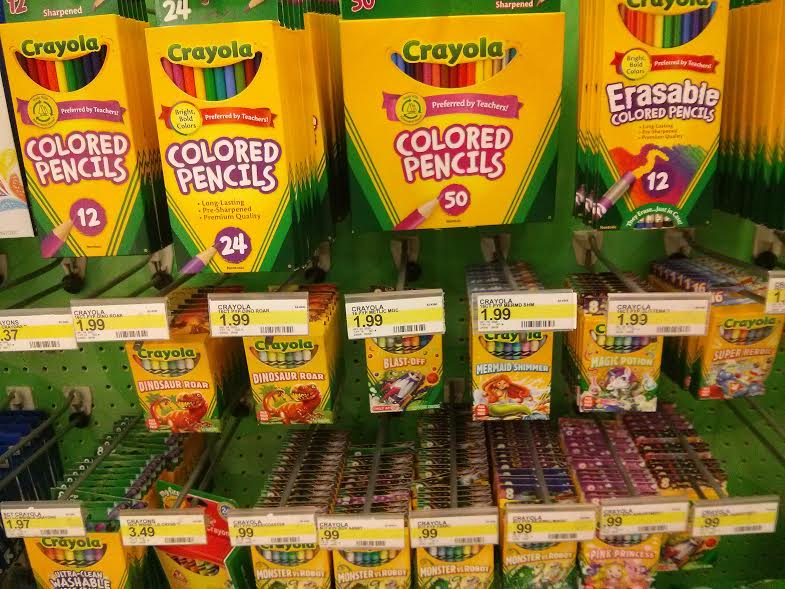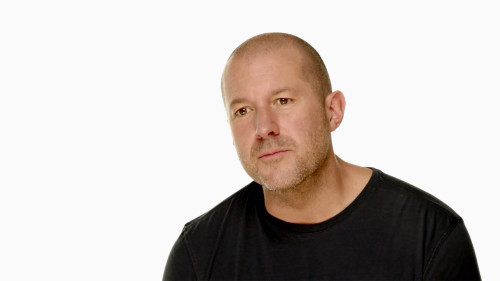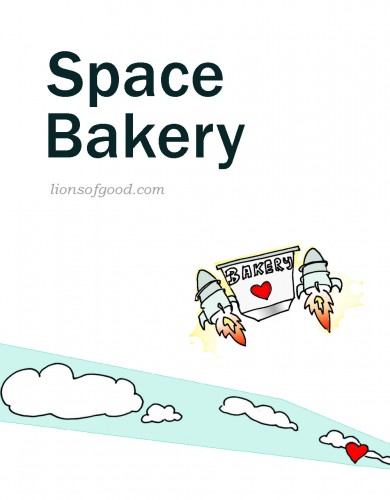We were walking down the aisle at the store when…
“I want dino crayon”
“What?”
“I want the dinosaur crayon”
“Why would there be a dinosaur cray- oh…”

The “dino crayons” were in a small pack in the shadows. But a 4-year-old saw it from the seat of a moving cart. That’s the power of using specific words that trigger feelings in a small group of people. Now check out what’s next to it. Rocket crayons, mermaid crayons, magic crayons, monster crayons, Pink Princess crayons, …
Why this is brilliant:
- It grabs attention using the one thing you love
DINOSAURS! It’s hard to make up your mind when you have no time to think. In a crowded marketplace, the products that win are the ones that do the thinking for us. Or as Jony Ive (VP of Design at Apple) says in his British accent… - Themes encourage bundling
E.g., “He loves dinosaurs… let’s get him this dino coloring book. I want him to be able to enjoy it right away, so here — dinosaur crayons. Let’s get some dinosaur stickers too.”
Have you ever noticed how much harder it’s gotten to find a cheap, plain-looking, solid-colored ball from the supermarket? But you can easily find more expensive Spiderman balls, Superman balls, Frozen balls, Barbie Princess balls, balls with fancy patterns, etc.
Well, I found the man who’s responsible for the extinction of plain balls from the US market. His name is Richard Gottlieb. He’s a toy “buyer”. Interview excerpt below.
Richard: Okay. Well, there was a situation of Kroger supermarket. I was working with a company that had a line of, I don’t know if you know what playballs are.
Michael: Playballs?
Richard: Yeah. When you go into a supermarket in the spring, there’s these big balls that are blown up.
Michael: Yeah, the kickballs that are in that wire thing?
Richard: Right.
Michael: Let me preface this. Is this a client of yours who contact you?
Richard: One of my clients.
Michael: Were they a manufacturer of these playballs?
Richard: An European manufacturer. And they had something interesting. First of all, they made a display that was not wire. It was PVC. It was a pretty display, white plastic. And in addition to that, they’re balls were very attractive. They had pictures on them. And we were up against three very established ball companies.
Michael: Were the other established ones in the U.S.?
Richard: Yeah. They were U.S. companies and we all had to go to the Fred Meyer offices in Portland, part of the Kroger group. And they had it all set up there. They brought their little racks and I did something fairly bold. I had my people build a display that was roughly 20 feet high, went to the ceiling, and we filled it with balls. And we pitched to them as a playball extravaganza rather than a display.
The logic was that they were gonna go through that many balls anyway, so why not use the top of that display as a stocking tier to maintain inventory. And that when people came into the store they would think they were having a religious moment. In that particular case, we didn’t get that particular display in, but we got the program because they were so blown away.
Michael: Were the other three playball manufacturers pitching at the same time?
Richard: Yeah, and they just had those little wire racks in there.
Michael: Oh, so do buyers, when they’re looking at a category like balls, they’ll bring all the companies there at once?
Richard: In that particular case, that’s the way Kroger was doing it.
Michael: Was your display inside that you set up?
Richard: They had a huge conference room with huge tall ceilings.
Michael: How did the price points compare and how important was that?
Richard: I’ll give a great story. It’s a bigger story than that. This is how I got it into Toys R Us and Target.
Michael: Same balls?
Richard: Yeah.
Michael: Okay.
Richard: What had happened was the American playball market was a market that was dominated by a very cheap looking kind of solid color marble looking ball and it usually retailed for 79 cents or 89 or 99.
Michael: Were they imported or made here?
Richard: Now, they’re imported, but at that time they were domestically made. And I was at a show in Hong Kong, actually, and I saw a ball made by a European company that was gorgeous. It had pictures on it. It was printed. It’s called 360 degree printing. And I was so knocked out by out that I met with them in Hong Kong, met with them in New York, and then actually went to Italy, met with them there. And then that’s where we developed this consulting relationship. The issue though was that I did focus groups on this product because it was more expensive to make and found out that American consumers would pay $3.99 for this product.So, we started going out to see buyers and initially, buyers just shut us down. They said, “Why would anybody buy a product that’s four or five times the retail?” So, we went back and we did a gross profit analysis on these same people and [inaudible] our program that did a quarter of a million dollar and said, “You put ours in and we project you’ll do a million and a quarter because we think that our ball is so good looking that we’ll sell more because we have different kinds of pictures, which means shoppers will buy more than one time if they have more than one child.”
Michael: Did you have licensed images?Richard: We had licensed and non-licensed. And they’ll buy more overtime. And I said, “I’ll tell you what I’ll do.” I said, “I’ll give you a 10% gross profit guarantee. I’ll guarantee you that you will do at least 10% more gross profit on my line then the line you’re currently carrying. And if you don’t we’ll write you a check.” And we got the business and of course it was a no-brainer for me because I realized we would have to do a quarter of the business they were currently doing in units for me not to be able to make it. Okay? What ended up happening, we actually sold more units than they were selling out of the other program. So, we never had to write a check to anybody.
Michael: Wow. Is that still…?
Richard: Yeah. They are very dominating in the U.S. market now and we actually changed the nature of the playball business.
Michael: You did. So, those ugly balls, they had to either step it up or they’re out of the market.
Richard: Well, the business really has gone to licensed balls.
Michael: Right. Interesting.
Richard: Yeah.
Michael: Tell me a little bit of how you used licensing to increase the sell through for those balls or maybe any other product. And how did you negotiate the licensing deal? How effective is licensing when you want to move a toy or a product that you want to get into to mass merchandising?
Richard: Well, in the U.S. toy industry, our product industry, it’s really become a fashion industry and it’s really lifestyle and trend based. And these licenses have a tremendous impact on sales of product. Something that a lot of people fail to understand is that they don’t understand why a manufacturer objects to paying a royalty for this license. It could be anywhere from 10 to 15%.
Michael: Of gross sales?Richard: Of gross sales. And what they miss though is if the American consumer sees a quantifiable perceived value in having a license on that product, they’re willing to pay more because it delights their child.
Michael: Absolutely. I’ll tell you a story. I’ve got a three and a half year old and he’s into Spiderman. And I’ve bought Spiderman t-shirts, Spiderman hats, Spiderman scooter, Spiderman underwear, Spiderman everything. He won’t put anything on but Spiderman. And it’s absolutely true. The parents want to please the kid with what they like and what they identify with on TV or the movies and stuff.
Richard: I have a theory right now that I’m working on and that is that the American toy industry really is missing a whole segment of what kids like and what young kids like. And what I’m seeing is that what is extremely popular with children is anime. Are you familiar with the anime, Japanese form of art? Pokemon.
Michael: Oh, Pokemon. Yeah.
Richard: It’s a form of anime, but it’s much bigger than that.
Michael: Right. Pokemon. Digimon. All the shows. That comic look.
Richard: I go to a lot of shows. Comicon, which is the comic book. And attended some seminars on manga and anime. And they did studies with boys and girls, roughly 8 years old. And they showed them pictures of anime and manga cartoons. And if you’ve ever looked at that stuff, they look to us, Asian, the characters. And they asked the kids, “Where are these children from?” And they said, “The United States.” And they were just very interested because what it showed was how our children see the world is, visually, very different than how we did. And what’s an American look has changed to be far more universal.
Michael: That’s true.
Richard: So, I think that there is a lack of use of this type of illustration in our products. The other one is similar here, is consumer electronics. These games that you play. Nintendo, etc. A lot of these characters are not being licensed in toys. Also things like flash art on the internet. So, our children are really into almost a different style of art and perception of what people look like than we are. And I think that that’s gonna be the next big cycle if we grab a hold of that.
Michael: Tell me how the television shows influence or prohibit toy manufactures from getting into the large retailers. You know, you’ve got Pokemon. You’ve got the TV shows Dora. If it’s on the air, it dominates the air and it dominates the buying decisions of these large mass merchandisers. Do you need a TV show to get your toys into these large merchandisers?
Richard: Well, I’ll give you an example. If you go into a major retailer and you go to the puzzle aisle where the children’s puzzles are, I would say 95% of the puzzles are licenses. There’s virtually no product that’s not licensed anymore in a lot of these categories. So, you really do have to have one. There’s only so much licensing to go around. So, it is very important. You have to have deep pockets. You have to have good distribution. You gotta be bold and you gotta be a visionary. Part of being a visionary is spotting some of these trends before the big boys do and being able to get them at a bargain price, getting them early.
Full interview with Richard Gottlieb here.
So the lesson is: to increase appeal, specialize. Use themes and schemes that hook your ideal customer.
Here are a few more examples:
- Bone broth. It’s just broth. But if if you say Bone Broth, you can charge $9 per cup to Paleo-diet fanatics.
- Micro SD card by Sony, for Premium Sound. It’s virtually identical to a regular micro-SD card, except for the words “for Premium Sound”. But those 3 words are why you can sell it for 5x more to audiophiles.
- Bottled water. It’s like the water from your tap. In fact, turn to the label at the back and you’ll find that most bottled water is “from a municipal source”. You wouldn’t have guessed by looking at the snow-capped mountains in the front. These folks couldn’t tell the difference either.
- What could be better than bottled water? Bottled water with vitamins. Vitamin Water! An ingenious invention marketed by Coca-Cola. Perfect for the busy person with an active lifestyle to grab on the way to the gym. Unfortunately, it’s mostly sugar water (it has almost as much sugar as Coke). Coca-cola lawyers defended with, “No consumer could reasonably be misled into thinking Vitamin Water was a healthy beverage.” Stephen Colbert agrees.
As you can see, the secret to selling is to give ’em what they want. But if you’re a buyer, be careful what you want, because you might get it.




Add your comment: